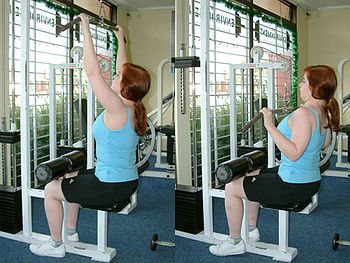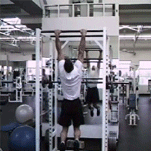The more work you put into something, the better results you will achieve. This has always been a widely accepted truth that applies to many areas of life. The harder you study, the better grades you will achieve. The more time you spend fine-tuning your athletic skills, the better athlete you will become. The longer you spend learning to play an instrument, the better musician you will become. Therefore, it only makes sense that the more time you spend in the gym, the stronger and more muscular your physique will become, correct? Contrary to what you might think, the answer to this question is a gigantic, definite, absolute no! It is in this area of bodybuilding that conventional wisdom goes straight out the window, down the street and around the corner.
I know what you might be asking yourself…
“What? Spending less time in the gym will actually make me bigger and stronger?”
Yes! It really will, and when we examine the muscle-growth process from its most basic roots, it becomes quite clear why this is the case.
Every single process that occurs within the human body is centered around keeping you alive and healthy. Through thousands of years of evolution, the human body has become quite a fine-tuned organism that can adapt well to the specific conditions that are placed upon it. We become uncomfortable when we are hungry or thirsty, we acquire a suntan when high amounts of UV rays are present, we build calluses to protect our skin, etc. So what happens when we break down muscle tissue in the gym? If you answered something to the effect of "the muscles get bigger and stronger", then congratulations! You are absolutely correct. By battling against resistance beyond the muscle's present capacity we have posed a threat to the musculature. The body recognizes this as potentially harmful and as a natural adaptive response, the muscles will hypertrophy (increase in size) to protect the body against this threat. As we consistently increase the resistance from week to week the body will continue to adapt and grow.
Sound simple? Ultimately it is, but the most important thing to realize in relation to all of this is that the muscles can only grow bigger and stronger if they are provided with sufficient recovery time. Without the proper recovery time, the muscle growth process simply cannot take place.
Your goal in the gym should be to train with the minimum amount of volume needed to yield an adaptive response. Once you have pushed your muscles beyond their present capacity and have triggered your thousand-year-old evolutionary alarm system, you have done your job. Any further stress to the body will simply increase your recovery time, weaken the immune system and send your body into catabolic overdrive.
Most people train way too often and with far more sets than they really need to. High-intensity weight training is much more stressful to the body than most people think. The majority of people structure their workout programs in a manner that actually hinders their gains and prevents them from making the progress that they deserve. Here are 3 basic guidelines that you should follow if you want to achieve maximum gains:
1) Train no more than 3 days per week.
2) Do not let your workouts last for longer than 1 hour.
3) Perform 5-8 sets for large muscle groups (chest, back, thighs) and 2-4 sets for smaller muscle groups (shoulders, biceps, triceps, calves, abs).
Take all sets to the point of muscular failure and focus on progressing in either weight or reps each week. If you truly train hard and are consistent, training more often or any longer than this will be counterproductive to your gains!
 fibers.
fibers. each muscle group intensively only once every seven days.
each muscle group intensively only once every seven days.



